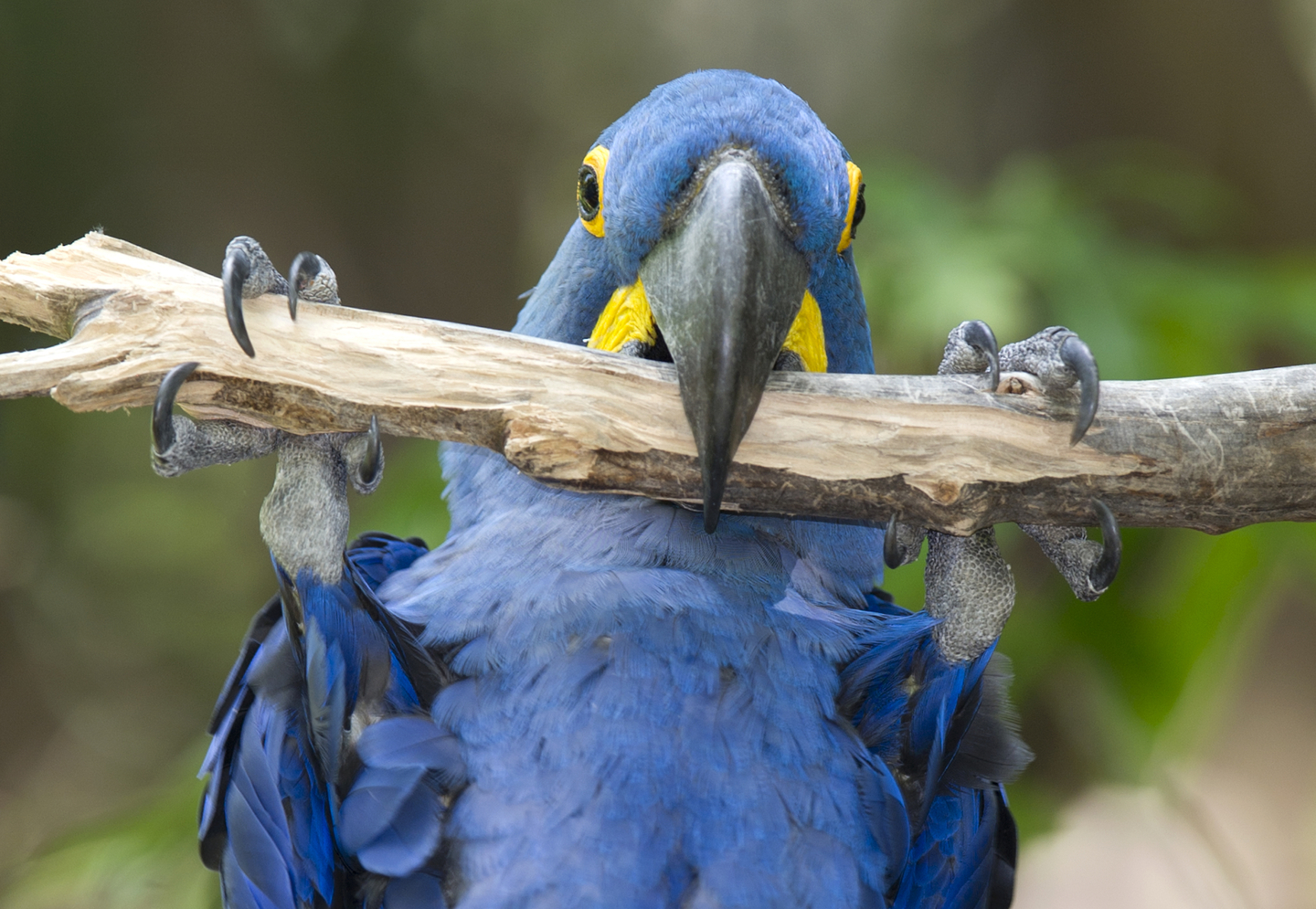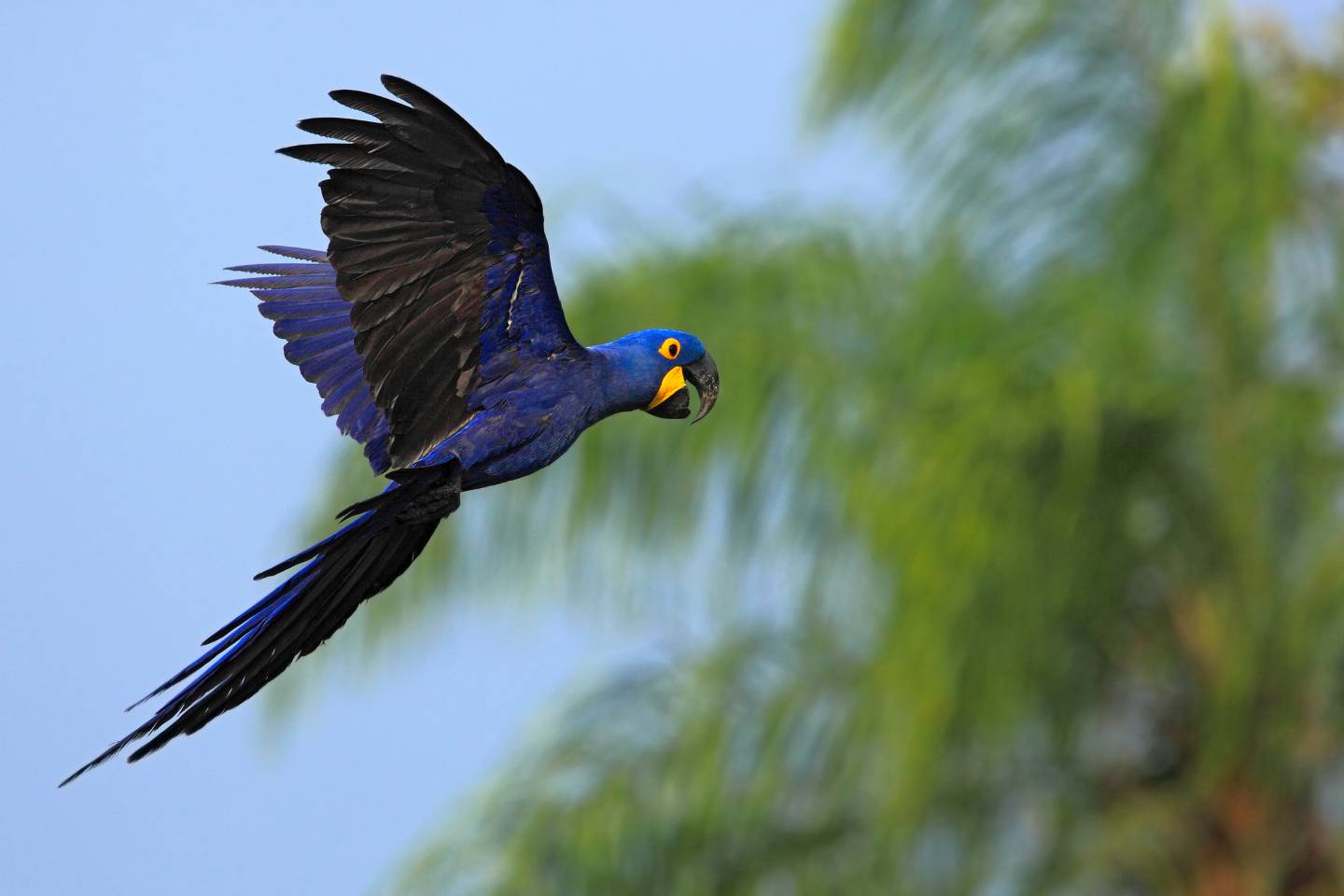- by FPABS-Admin
- 0
- Posted on
Hyacinth macaw
Hyacinth macaw on the outskirts of the dense rainforests in Brazil, Bolivia, and Paraguay, lives a stunning parrot with brilliant, cobalt-blue feathers. The hyacinth macaw (Anodorhynchus hyacinthinus) is the largest of the macaw species, and its powerful beak allows it to break open nuts from native palms and reseed its habitat.
Life in the wetlands
Hyacinth macaw is the largest parrot in the world by length, the hyacinth macaw measures one meter (3 ft 3 in) long from the tip of its tail to the top of its head. Only the flightless kakapo of New Zealand outweighs it at up to 3.5 kilograms. Hyacinth macaws reach a maximum of 1.7 kilograms (3 lb 12 oz).
One powerful bite
Hyacinth macaw along with its striking blue plumage, the hyacinth macaw has distinct bright yellow feathers around the eyes and at the base and the corners of the beak, making it appear to have a perpetual grin. Looks can be deceiving, however, as their seemingly smiling beak has a powerful bite with the ability to apply more than 300 pounds of pressure per square inch.

Vital seed
As hyacinth macaws break open nuts and on the kernels inside the seeds from these tree species can be sprea throughout the forest as the birds fly. Since many other birds and animals do not have the jaw or muscle strength to crack open such tough shells, it is thought that hyacinth macaws play a vital role in dispersing such seeds, helping their ecosystem flourish.
Vocal parenting pairs
Hyacinth macaws is know to fly in pairs and constantly contact one another through vocalizations.Even if the on opposite sides of the forest. Breeding and nesting occur between July and December. With nests constructed in tree cavities or cliff faces.Male hyacinth macaws attend to their female while she incubates the eggs which lasts about a month. Chicks leave the nest around 110 days to explore but remain dependent on their parents until six months old.%20is%20a%20beautiful%20bird%2C%20deep%20cobalt%20blue%20in%20colour.%20dreamstime_xxl_639716.jpeg)
Reliance on toucans
Perhaps one of the most well-known rainforest birds, the toucan, and hyacinth macaws have a unique relationship. While toucans are a primary predator of macaw eggs, most of the nests of these eggs would not exist without the toucans.
